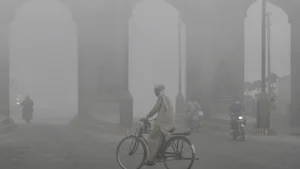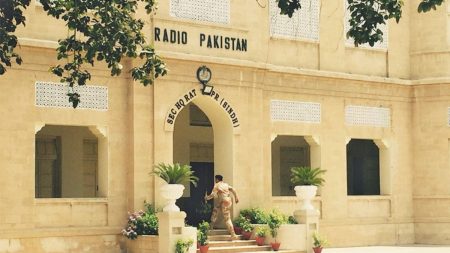The Meteorological Office that high-pressure systems in the upper atmosphere are expected to induce heatwave conditions across most regions of Pakistan, particularly in Punjab and Sindh, starting from May 21. These conditions are anticipated to escalate into severe heatwaves from May 23 to 27.
The forecast predicts daytime temperatures in Sindh and Punjab to be 4 to 6 degrees Celsius above normal between May 21 and 23. Subsequently, temperatures are projected to rise further, reaching 6 to 8 degrees Celsius above normal from May 23 to 27.
Islamabad, Khyber Pakhtunkhwa, Kashmir, Gilgit-Baltistan, and Balochistan are also likely to experience above-average temperatures, ranging from 4 to 6 degrees Celsius above normal during the same period.
Weather Warnings and Advisory
In addition to the heatwave warning, the Meteorological Office has forecasted that a shallow westerly wave will affect the upper regions of the country starting from the evening of May 16. This is expected to lead to varied weather phenomena across several regions:
– Balochistan: Dust storms, thunderstorms, and isolated rainfall are expected in various districts from the evening of May 16 to May 19.
– Khyber Pakhtunkhwa: Similar weather conditions are anticipated in multiple districts from May 16 evening to May 19.
– Gilgit-Baltistan and Kashmir: These regions are likely to experience rain, wind, and thunderstorms from the evening of May 16 to May 19.
– Punjab and Islamabad: Dust storms, thunderstorms, and isolated rainfall are forecasted from the evening of May 16 to May 18.
– Sindh: Dust storms, thunderstorms, and isolated rainfall may occur in specific regions on May 17 and 18.
Advisories for the Public
Given the expected severe weather conditions, the Meteorological Office has issued several advisories:
– Farmers: Farmers are advised to manage their crops accordingly to mitigate the potential adverse effects of extreme temperatures.
– General Public: Minimizing unnecessary exposure to direct sunlight is recommended to avoid heat-related illnesses.
– Water Usage: Responsible use of water resources is urged to ensure adequate supply during the heatwave.
– Fire Risks: The extreme dry and hot conditions may increase the risk of bushfires and forest fires in vulnerable areas of Punjab, Khyber Pakhtunkhwa, and Northeast Balochistan.
Possible Impacts
The forthcoming heatwave poses significant risks, including potential health hazards for vulnerable populations, increased strain on water and power resources, and heightened fire danger in dry and forested areas of Pakistan. Authorities are on high alert to manage these risks and mitigate the impact on the population.
Residents in affected regions are advised to stay informed through official channels and adhere to safety guidelines issued by local authorities. This proactive approach aims to safeguard health and property as the country braces for the anticipated severe heatwave conditions.









